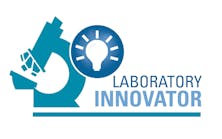This month, I want to share with you some information about a meeting of leading organizations representing pathology and laboratory medicine that occurred late last year: the 2013 Pathology Workforce Summit. The conference attendees crafted a statement about workforce issues, which can be found in its entirety at http://www.cap.org/apps/docs/statline/ pdf/pathology_workforce_summit_propositions.pdf.
The Summit, which convened representatives from 24 professional pathology and laboratory medicine organizations, was sponsored by the College of American Pathologists (CAP), the American Society for Clinical Pathology (ASCP), the Association of Pathology Chairs (APC), and the United States & Canadian Academy of Pathology (USCAP).
The joint statement, “Propositions on Workforce Issues Affecting Pathology and Laboratory Medicine,” is a thought-provoking discussion that describes key issues facing pathology and laboratory medicine under today’s healthcare system and outlining recommendations to help pathologists best meet patient needs in the future. It is a lengthy read—my computer counts some 3,777 words—but an interesting one; it paints a picture of a profession in flux, facing challenges and also opportunities in uncertain times.
The document begins, in fact, with this context: “The future of the pathology and laboratory medicine workforce is uncertain, with substantial projected changes in the numbers of its various component members over the coming several decades.” It identifies several variables that may affect the discipline and the workforce: advances in science and technology; changes in educational requirements and qualifications that will be needed by practitioners; and an increasing volume of testing and broadening menu of available tests, often using new platforms. “We believe that action is needed now if pathology and laboratory services [will be] able to meet the needs of the American healthcare system in future decades.”
The report then defines terms: “pathology,” “pathologist,” “laboratory medicine, laboratory medical services or laboratory services,” “pathology and laboratory medicine,” “laboratory professional,” “laboratory workforce,” “anatomic pathology,” and “clinical pathology.” This section is interesting; certainly, the authors are following a typical model for this kind of formal document, which usually includes a “Definition of Terms” section. But the detail with which this is done may well reflect the fact that these terms are often used loosely, inexactly, or interchangeably—a point that readers of MLO have often made.
The statement then identifies and presents extended discussion of five “propositions”—emerging issues that will impact the pathology workforce: a decreased supply of pathologists and laboratory professionals; changes in the demand for pathology and laboratory services and the mix of services provided; new factors requiring creative reconsideration of the nature of recruitment and training and advocacy for adequate resources; the need for workforce projections that take into account all members of the laboratory team; and the need for access to education and training opportunities.
The report then closes with three recommendations to address future workforce issues: (1) reassessing what every pathologist needs to know and identifying new ways to ensure that adequate numbers of pathologists acquire both general skills and sub-specialized expertise, especially in key emerging areas; (2) developing a plan to attract and recruit highly qualified medical and STEM (science, technology, engineering, and mathematics) students into pathology and laboratory professions; and, (3) reevaluating long-term training expectations to propagate an outlook of lifelong learning to maintain or enhance career opportunities and applicability to current healthcare delivery systems and payment models.
The recommendations certainly have the virtue of being forward-looking; their authors are not generals who are fighting the last war. But are they appropriate, are they feasible—are they enough? We’d like to know what you think.





